-
NASA’s James Webb Space Telescope has unlocked a window into our Universe unlike any before.
-
Using its powerful infrared vision, JWST can peer into the heart of stellar nurseries.
-
JWST reveals how stars, planets, and possible life form in our Universe. It is lovely.
The James Webb Space Telescope is, in many ways, a time machine. It uses infrared vision to look back 13.5 billion years to the earliest moments in our universe.
But even now, the cosmos is expanding and developing, giving birth to stars, new planets, and new possibilities for the emergence of life.
The stellar nurseries, where new stars blossom into life, are thick clouds of gas and dust, which are molecular clouds. JWST can peer through the clouds to observe star formation in real time, providing the unique opportunity to understand how new solar systems form and, ultimately, what makes it possible for us to even exist.
“We can go into the nurseries and look at the babies instead of looking at this old, archeological evidence from our own solar system,” said Klaus Pontoppidan, a research scientist at NASA’s Jet Propulsion Laboratory and former JWST project scientist.
JWST’s observations of galactic nurseries have inspired a number of scientific discoveries. But they are also incredibly beautiful to look at.
The Cosmic Cliffs
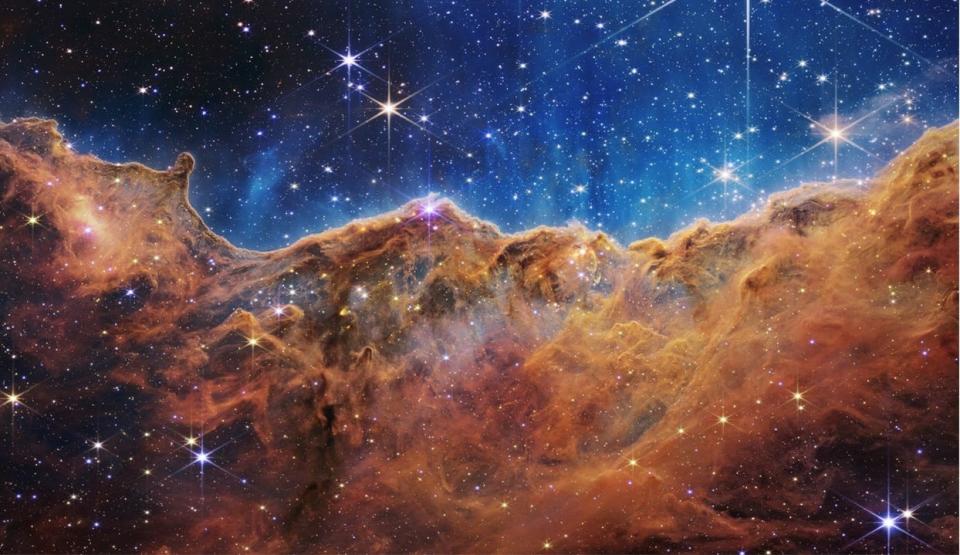

At first glance, this might look like a photo of a rocky mountain range under a starry sky. But this is actually the edge of a huge cavity inside a stellar nursery called the Carina Nebula located 8,500 light years from Earth.
Known as the “Cosmic Cliffs,” this cavernous region is shaped by hot young massive stars within the cavity’s core. These stars emit powerful winds and radiation that, over time, have carved out this area.
Protostar forming inside L1527
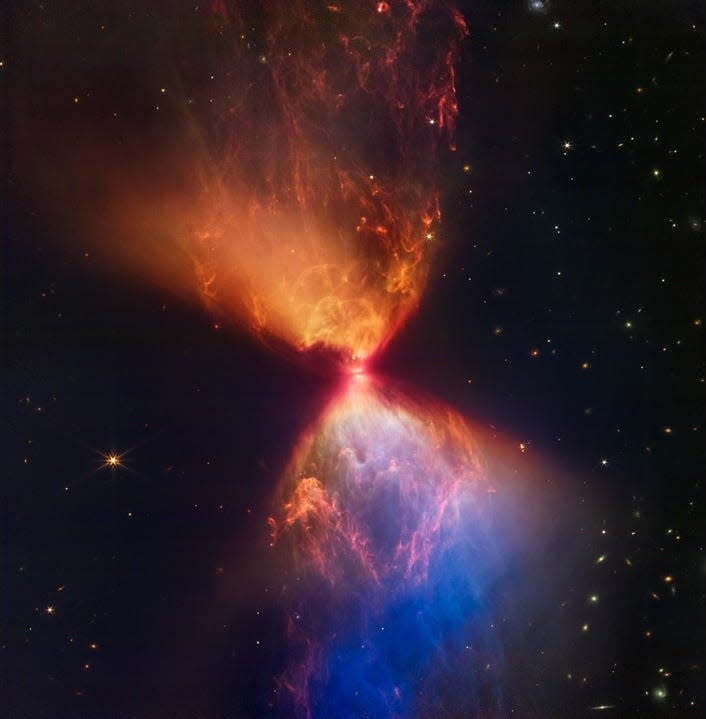

Deep turbulence within stellar nurseries creates high-density regions known as knots. When these knots become massive enough, the gas and dust collapse in on itself and the material at the core swells, creating a baby star, or “protostar.”
This is a close-up of a protostar forming inside the dark cloud L1527, a star-forming region within a larger stellar nursery called the Taurus molecular cloud about 460 light-years from Earth. The protostar is hidden inside the “neck” of this hourglass shape.
This image clearly shows how bursts of wind and radiation from this young star blow away the surrounding gas and dust. The orange and blue ejections glow in this infrared view, giving the appearance of a fiery hourglass.
A protostellar outflow inside the Perseus stellar nursery
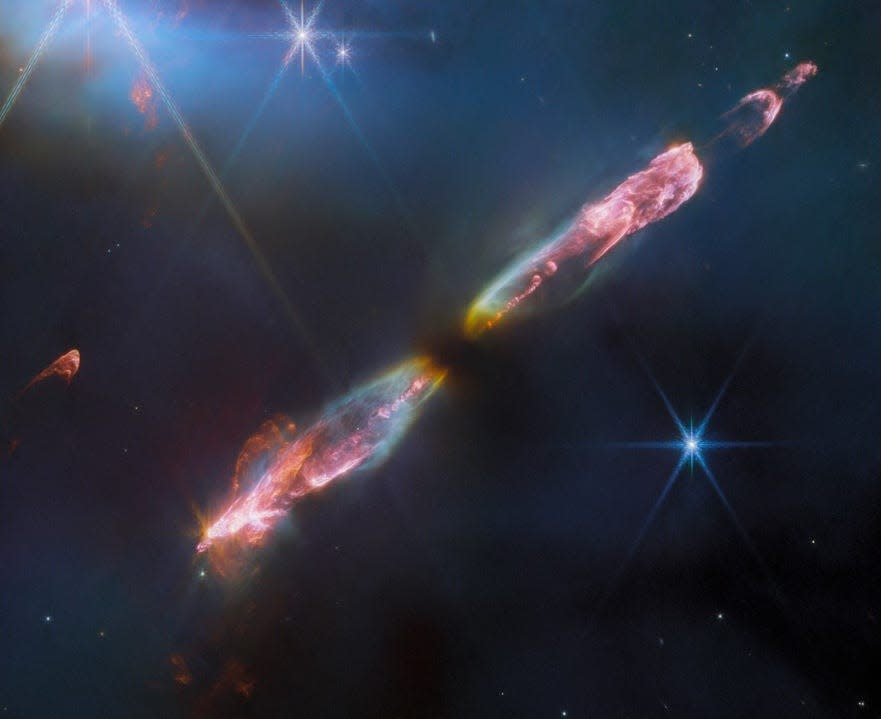

Looking inside the Perseus star nursery JWST was able to capture another stunning image of the prostate outflow.
This is an example of a Herbig-Haro object, which is formed when the wind and gas emitted by newborn stars send shock waves crashing into the surrounding gas and dust at high speeds. Molecules are excited by this turbulence and emit infrared light, which is the colorful glow photographed here by JWST.
The protostar is hidden in the black void at the center of these loud shock waves, shrouded in a dark brown cloud of gas and dust.
Ro Ophiuchi
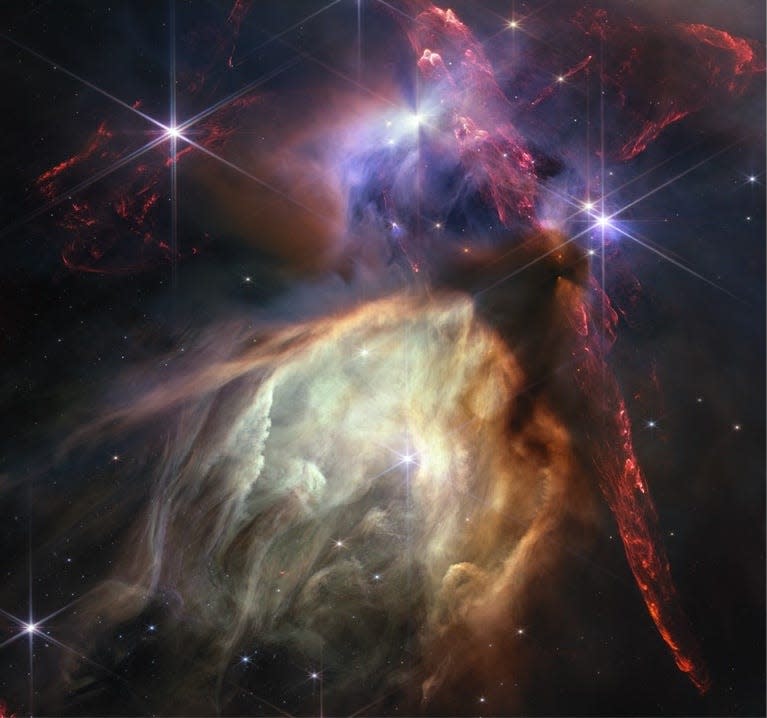

Rho Opiuchi is the nearest star nursery to Earth, about 390 light years away.
It’s relatively small and quiet compared to other star-forming regions, but this image shows a dramatic outflow from about 50 young stars as big or smaller than our sun, which you can see here as red clouds to the right among the clouds in the area. a center that glows green and orange from carbon-rich dust, Pontoppidan said.
The Tarantula Nebula
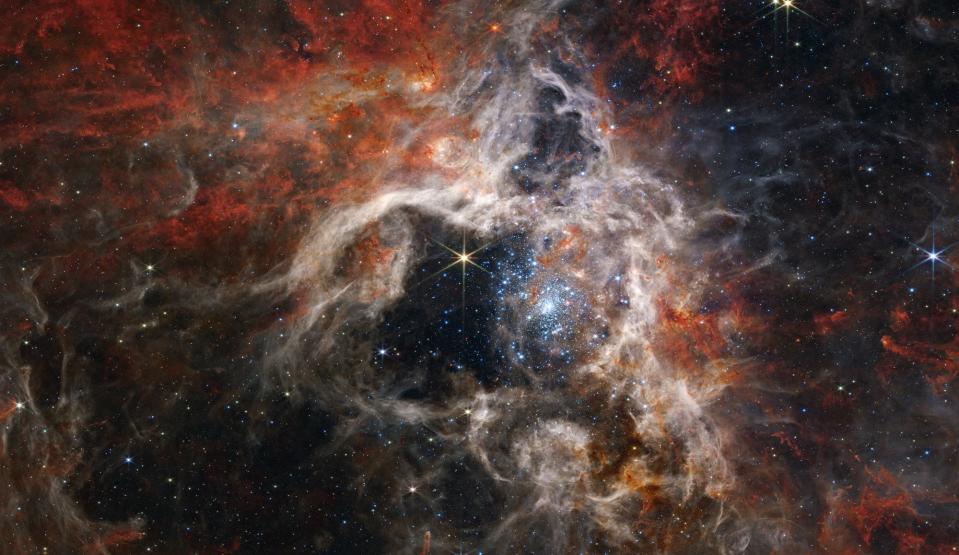

This mosaic image of the Tarantula Nebula stretches 340 light years across. JWST shows this stellar nursery in a whole new light, revealing thousands of never-before-seen young stars nestled in the center.
The Tarantula Nebula is of particular interest to astronomers because its chemical composition is similar to the vast star-forming regions observed at the universe’s “cosmic noon,” when star formation was at its peak.
The Orion Bar
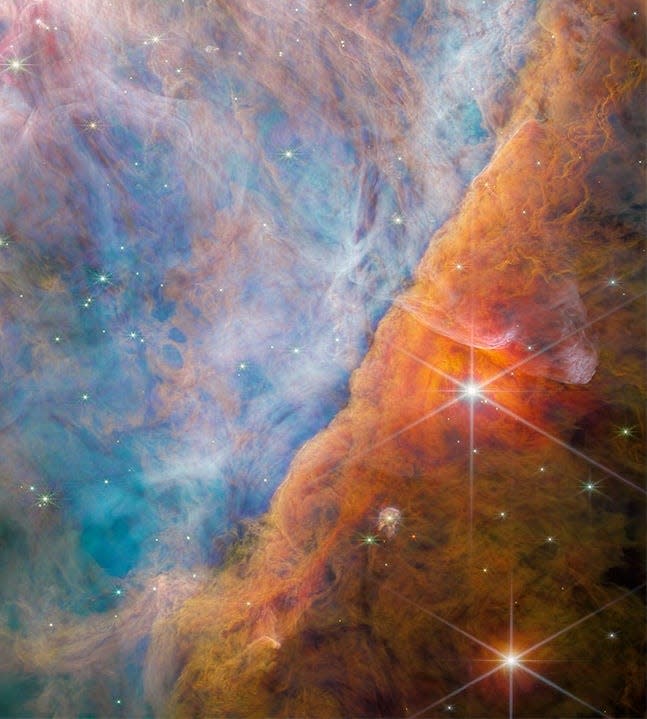

This region of the Orion Nebula is called the Bar of Orion. In this ridge-like region, ultraviolet light from the Trapezium cluster (a group of young massive stars in the upper left corner of the image) erodes the surrounding molecular cloud.
Scientists are interested in observing this region of the Orion Nebula because it appears to be similar to what our solar system looked like when it was still forming, Pontoppidan said.
The Chameleon I molecular cloud
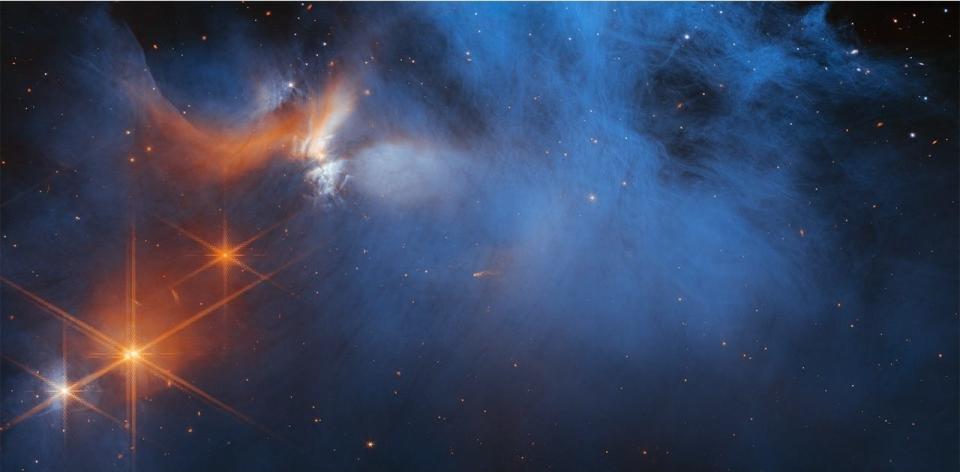

One of the building blocks of life is hidden in this image: water ice.
This is the center of the dark icy molecular cloud Chameleon I. Radiation from Ced 110 IRS 4, a bright orange young protostar in the upper left of the image, shows the surrounding blue hazy cloud material.
In the background, light from more stars (orange dots behind the cloud) shines. By studying this light, astronomers detected water ice particles within the clouds, which could, one day, go on to form exoplanets with the conditions for life.
N79: a massive star-forming complex
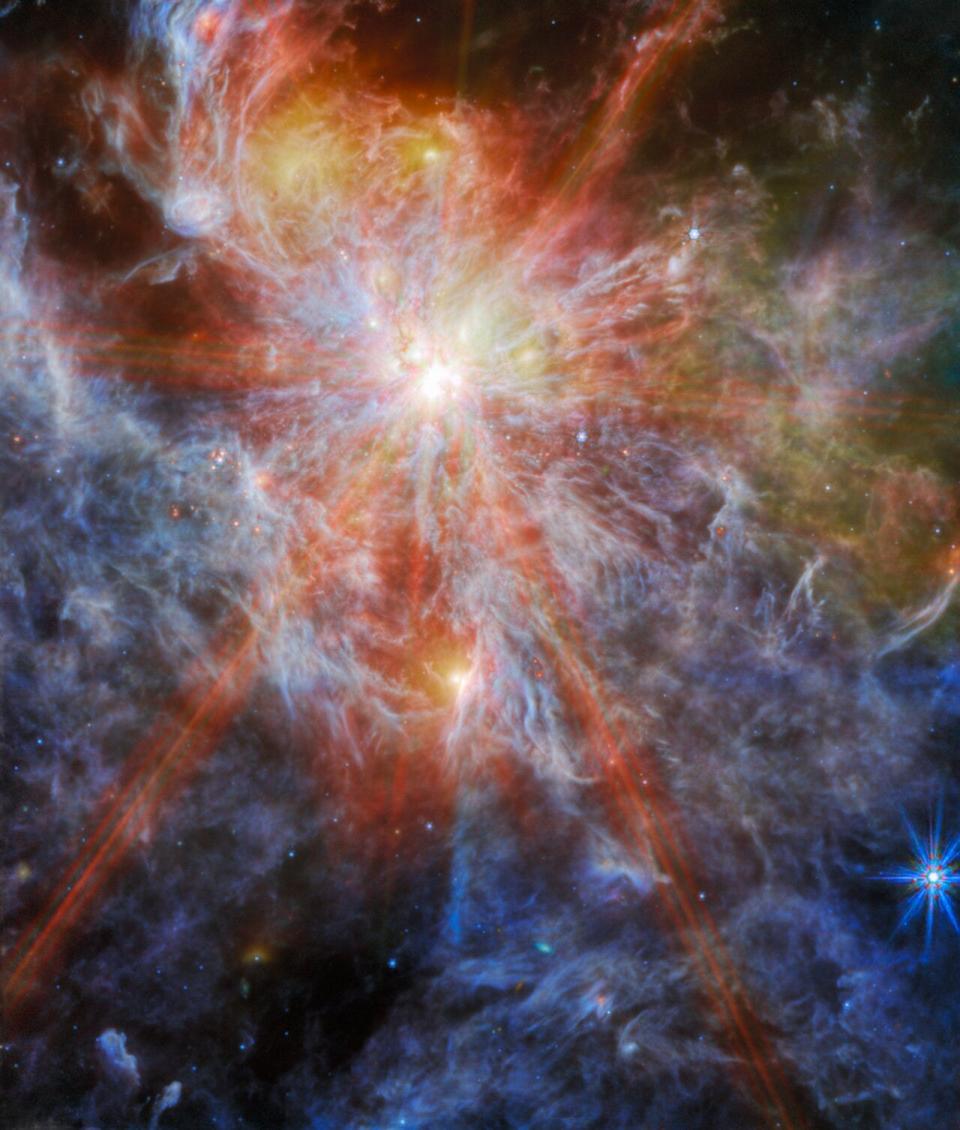

Nebula N79 is a giant star factory. It is considered a younger version of the Tarantula Nebula, but is almost five times larger, spanning 1,630 light years across. And when it comes to birth stars, N79 is twice as effective.
In this image, a bright young star shines through the nebula, revealing its six constellation spikes.
NGC 604: emission nebula
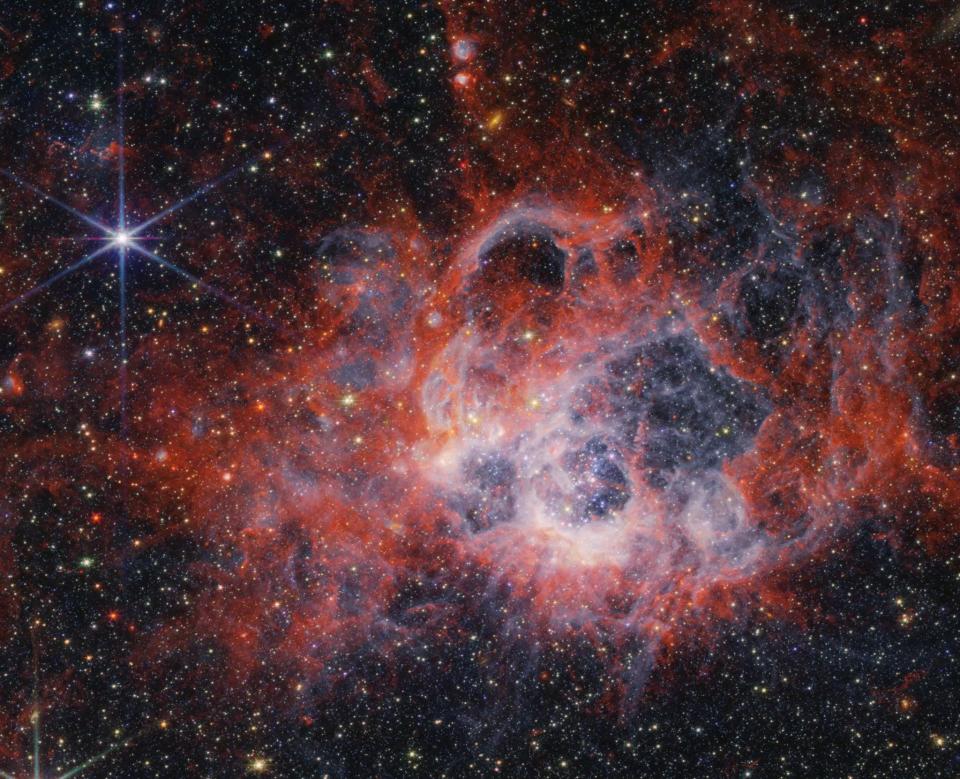

NGC 604’s stellar nursery is an emission nebula: a cloud of ionized gas that emits its own light at different wavelengths. In this image, tendrils and clumps of emission are visible in bright red, extending from open “bubbles” in the cloud.
These bubbles were carved out by large winds from very hot, bright young stars inside. In fact, NGC 604 is home to more than 200 of the hottest and most massive stars in the universe, all still in their infancy. One example is O-type stars, which can be more than 100 times the size of our sun.
In this way, NGC 604 is truly unique. There is no other star forming region like it in the entire Milky Way.
Pillars of Creation
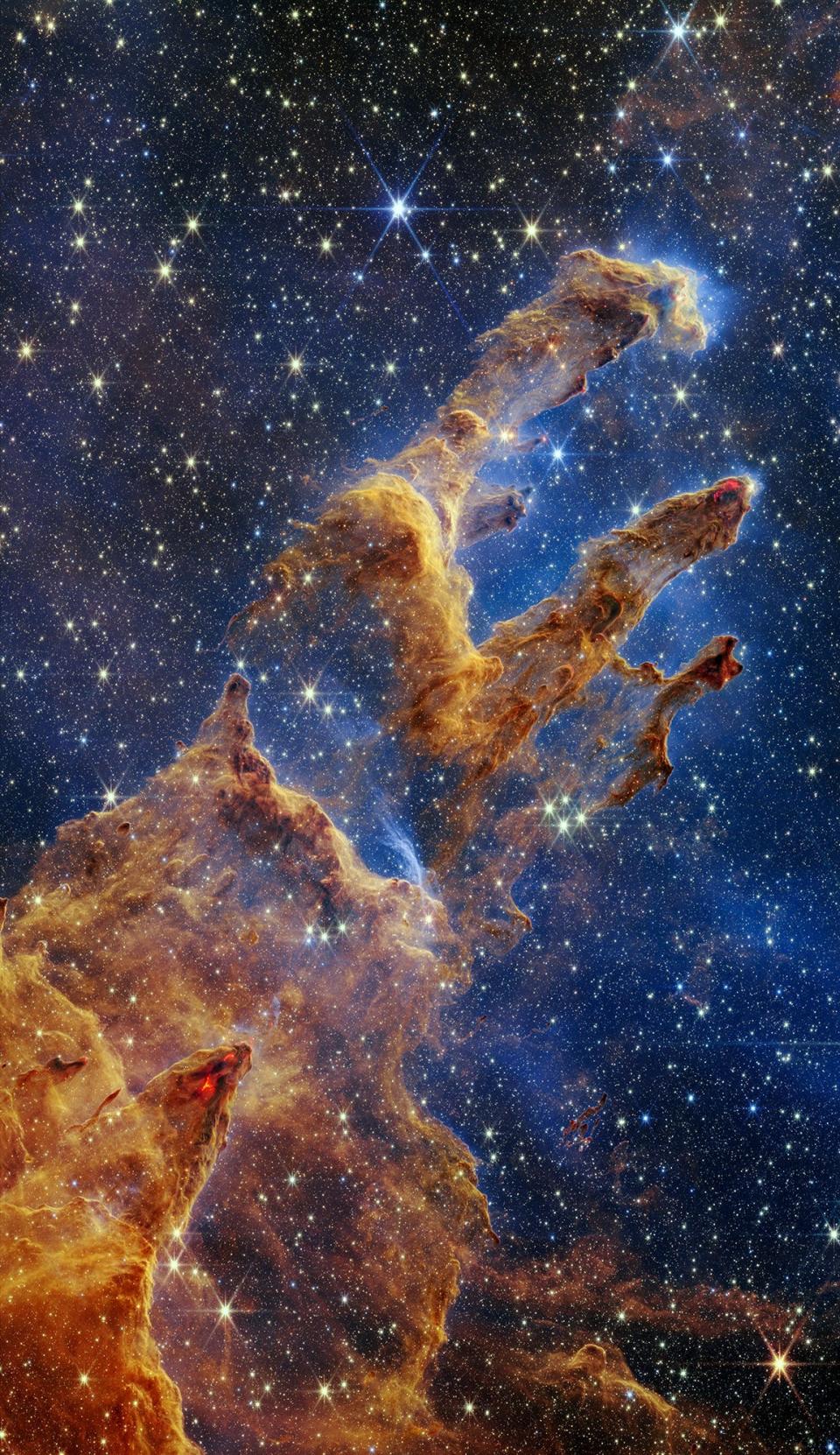

These are the Pillars of Creation, named for the long, vertical clouds of gas and dust that resemble the geological arches and spiers of the desert landscape. Photographed at this angle, they look almost like a human hand reaching out into space.
The pillars themselves are about five light years high. Inside them, knots of gas and dust collapse in on themselves to form new stars. Bright red, wavy lines at the edges of the bullets are outflows from newly formed stars.
Read the original article on Business Insider